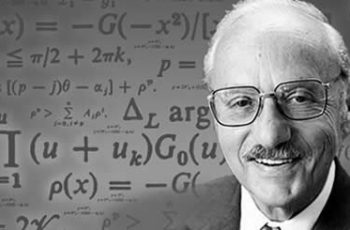
Introduction:
Ghost hunting, also known as paranormal investigation, is a captivating and mysterious field. Those who delve into the world of spirits and hauntings require the right tools to capture evidence and communicate with the other side. In this article, we’ll explore essential ghost hunting equipment and how it can aid you in your quest for the supernatural.
One of the most critical tools in a ghost hunter’s arsenal is the EMF (Electromagnetic Field) meter. Ghosts are believed to emit electromagnetic energy, and EMF meters can detect fluctuations in these fields, indicating possible paranormal activity.
EVP (Electronic Voice Phenomena) recordings are a common method for capturing spirit voices. Invest in a high-quality digital voice recorder to capture unexplained sounds and voices during your investigations.
Infrared cameras are essential for capturing visual evidence of paranormal activity in the dark. They can capture and reveal anomalies, apparitions, or cold spots that are invisible to the naked eye and undetectable by using normal senses.
Spirit boxes, also known as ghost boxes, are communication devices that rapidly scan through radio frequencies, allowing spirits to manipulate audio signals to form words or phrases.
Thermal imaging cameras detect environmental temperature variations, which can indicate the presence of spirits or paranormal activity in the form of cold spots or heat anomalies. They are specialized recording devices that differ from infrared cameras.
6. Paranormal Response Device:
Paranormal response devices provide clear responses that can be seen and heard during an investigation. Just set it down, ask simple questions, and await a response. Ask questions with a Yes/No answer, or any other close-ended questions of your choice. Answers are indicated with a tone and either a Red or Green light.
Laser detection grids enable the visualization of anomalies as they occur in a room during a paranormal investigation. This empowers investigators to determine anomaly speed and dimensions and they can even help to make a 3D model of the entity.
Motion sensors detect movement or disturbances in empty rooms, alerting investigators to potential paranormal activity with a light (for visual alerts and video documentation) and choice of voice, chime, music or alarm. Just place in any room where claims of movement are detected and be alerted if movement’s detected.
To review and analyze EVP recordings effectively, invest in EVP analysis software. This tool can help enhance, clarify and document investigation findings. Analysis of EVPs is normally carried out using free audio editing software like Audacity.
Ghost hunting kits feature a great mix of high quality investigative research items for EMF, Temperature and ghost box communication, with some essential protective cases and flashlight for safety.
Conclusion:
Ghost hunting equipment is a crucial aspect of paranormal investigations. These tools help investigators collect and analyze evidence of supernatural occurrences. Whether you’re a seasoned investigator, or a curious enthusiast, having the right equipment can enhance your understanding of the unexplained.
Remember, while these tools are valuable, a skeptical and ethical approach to ghost hunting is essential. Respect the privacy of spirits and the living and always seek to debunk natural causes before concluding that you’ve encountered something truly paranormal. Happy hunting!
About Ghost Hunting
Ghost hunting, also known as paranormal investigation or ghost investigation, involves exploring locations believed to be haunted in search of evidence of paranormal activity. It’s a field that combines aspects of science, folklore and spiritual beliefs. Ghost hunters typically use various tools and techniques to try to capture evidence of supernatural occurrences.
Here’s an overview of ghost hunting:
Techniques and Tools:
Electronic Equipment:
Ghost hunters use a variety of tools such as EMF (Electromagnetic Field) meters, infrared thermometers, digital audio recorders and night vision cameras to detect anomalies or capture evidence like EVPs (Electronic Voice Phenomena).
Environmental Monitoring:
Monitoring temperature changes, fluctuations in electromagnetic fields and other environmental factors believed to be associated with paranormal activity.
Mediums and Psychics:
Some investigations involve individuals claiming psychic abilities or mediumship to communicate with spirits or sense energy.
Historical and Anecdotal Research:
Learning about a location’s history and collecting stories or anecdotes about alleged hauntings to guide investigations.
Popular Beliefs:
Ghosts:
Entities believed to be the spirits of deceased individuals, often thought to linger in places for various reasons.
Apparitions:
Visual sightings of supposed spirits or entities.
EVPs:
Electronic Voice Phenomena, which are believed to be voices or sounds from spirits captured on audio recording devices.
Criticisms and Skepticism:
Ghost hunting and the evidence gathered are subjects of skepticism within the scientific community due to lack of reproducible evidence and reliance on subjective experiences. Often, natural explanations such as environmental factors or psychological influences are suggested for reported phenomena.
Pop Culture and Media:
Ghost hunting has gained popularity through TV shows, documentaries and movies, highlighting investigations and alleged encounters with the supernatural. Shows like “Ghost Hunters” and “Ghost Adventures” have popularized this field.
Ethics and Approach:
Ethical ghost hunters emphasize respect for locations, permission to investigate and considerate interactions with any potential spiritual presence. They seek to find rational explanations before attributing occurrences to paranormal causes.
It’s important to note that while many people find ghost hunting intriguing, it’s a controversial field. Scientific consensus typically doesn’t support the existence of ghosts or paranormal phenomena due to the lack of concrete evidence and the presence of multiple possible explanations for reported occurrences.

